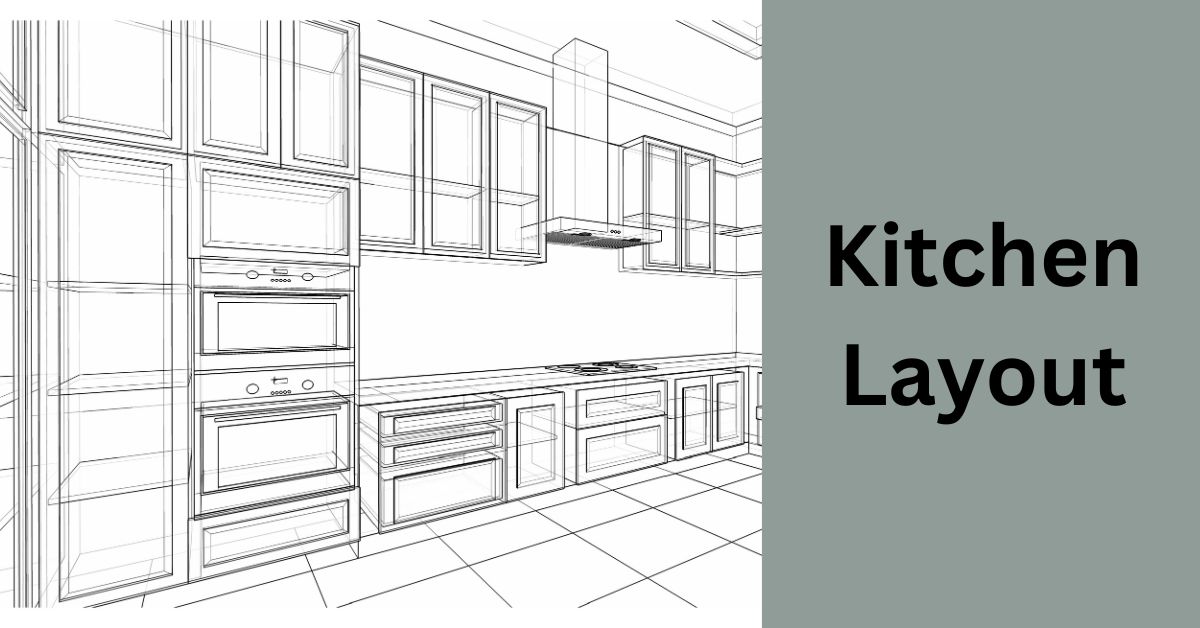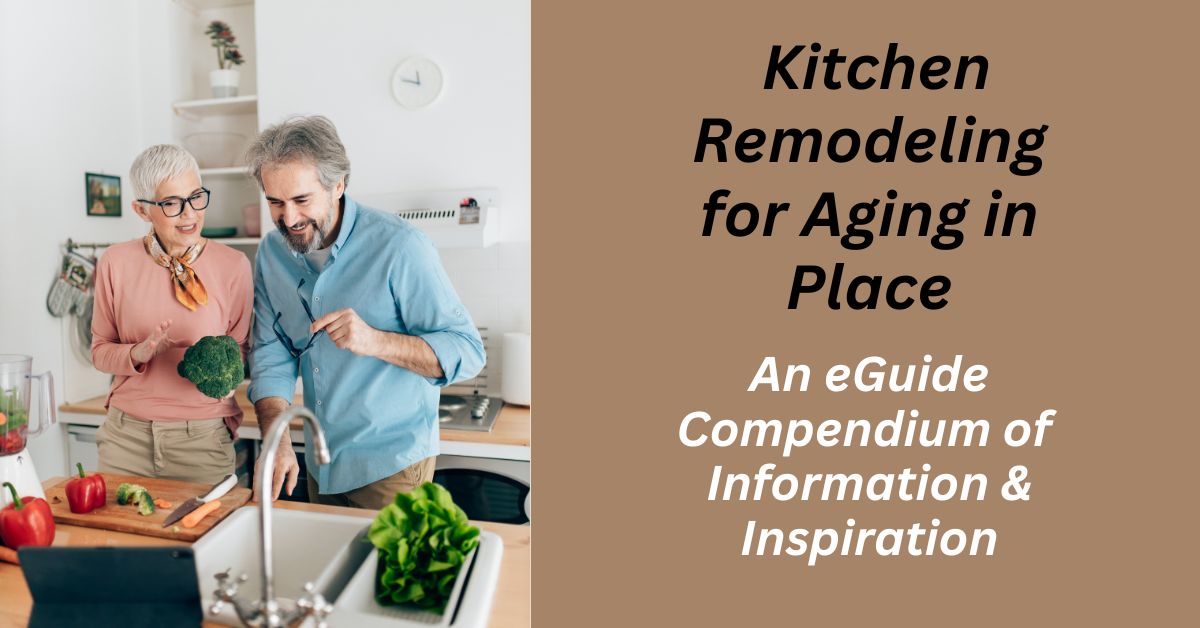Table of Contents
Note: If you came to this post on kitchen layout through a random search, please click on this parent page and our home page for more context.
Laying Out the Kitchen
In this post, we discuss how to approach a kitchen remodel layout and apply recognized design standards and principles.
This builds the bones of your kitchen – all ready for you to apply the finishing touches.
What You Need to Know About Kitchen Design
The kitchen and bathroom are the two rooms in the house that get the most attention in a remodeling project. However, the kitchen is where you spend the most money.
So in the interest of making sure you spend your money well, it is worth spending a little time understanding the design of the kitchen. It will also help you in your conversations with your designer or contractor. It will definitely help you avoid expensive mistakes.
By the time you have checked all this out, you may know more about the subject than your contractor and maybe as much as your designer in some areas.
- Related post: Design Elements & Principles
- Related post: Color in Design
- Related post: Universal Design
Discover Kitchen Design Standards
There are some long-established and well-respected kitchen design standards but they may be flexibly applied to reflect and enhance the contemporary use of a modern kitchen. These standards, which include the Illinois Rules and the Work Triangle, have an impact on the selection and design of your appliances and kitchen cabinetry.
Illinois Rules
In 1944 the University of Illinois conducted several studies on kitchen design and developed design principles that are still in use today. They remain the gold standard, although Universal Design and design for Aging in Place go beyond the Illinois guidelines.
- Related post: Kitchens for the Elderly
Since the Illinois Rules came into being, lifestyles have changed. There is now likely to be more than one person active in food preparation. Also, the kitchen has become even more of a gathering place.
The kitchen island, which can provide additional work triangles and a seating area, is a popular feature in a kitchen remodel project. The work triangle remains a valid concept but now the concept of “work zones” or “work quadrangles” supplements it. This will include the kitchen island.
Aesthetics and Practicality
The Illinois principles speak more to functionality than aesthetics. So let’s address some preliminary points. We also refer the reader to the 101 -point wishlist-checklist in this related post:
- Related post: Kitchen Overview
Kitchens should be practical. They usually get more use than any other room in the house. So they should be as immune as possible to wear, tear, and staining and as easy to clean and maintain as possible.
Basic aesthetics require that the range, oven, or cooktop is not visible from the front entrance. Nor should it share the same wall back to back with a toilet. However, they should be in a central/focal location in the kitchen.
The kitchen is generally the focal point of the modern home and usually the first room to be remodeled. The aesthetics of your new kitchen are important. But, more so than in any other room in the house, it is in the kitchen where form most follows function.
The 31 Illinois Kitchen Rules
Rule 1 – Kitchen Entry Doors
Guideline: The clear opening of a doorway should be at least 32″ wide. This requires a minimum 34″ door.
Rule 2 – Kitchen Door Interference
Guideline: No entry door should interfere with the safe operation of appliances, nor should appliance doors interfere with one another.
Rule 3 – Distance between Work Centers (Kitchen Triangle)
Guideline: In a kitchen, with three work centers the sum of the three traveled distances should total no more than 26′ with no single leg of the triangle measuring less than 4 feet nor more than 9 feet.
Notes:
- A major appliance and its surrounding landing/work area form a work center. The distances between the three primary work centers (cooking surface, clean-up/prep primary sink, and refrigeration storage) form a work triangle.
- When the kitchen plan includes more than three primary appliance/work centers, each additional travel distance to another appliance/work center should measure not less than 4′ nor more than 9′.
Rule 4 – Separating Work Centers
Guideline: A full-height, full-depth, tall obstacle should not separate two primary work centers. A properly recessed tall corner unit will not interrupt the workflow and is acceptable. (Examples of a full-height obstacle are a tall oven cabinet, tall pantry cabinet, or refrigerator)
- Each leg is measured from the center front of the appliance/sink.
- No work triangle leg intersects an island/peninsula or another obstacle by more than 12″.
Rule 5 – Work Triangle Traffic
Guideline: No major traffic patterns should cross through the basic work triangle.
Rule 6 – Work Aisle
Guideline: The width of a work aisle should be at least 42” for one cook and at least 48” for multiple cooks, measured between the counter frontage, tall cabinets, and/or appliances.
Rule 7 – Walkway
Guideline: The width of a walkway should be at least 36”.
Rule 8 – Traffic Clearance at Seating
Guideline: In a seating area where no traffic passes behind a seated diner, allow 32” of clearance from the counter/table edge to any wall or other obstruction behind the seating area.
Rule 9 – Seating Space
Guideline: The kitchen seating should be a minimum of 24″ wide for each person. Also:
For 30″ high tables/counters, a minimum 18″ deep clear knee space for each seated diner.
For 36″ high counters, a minimum 15″ deep clear knee space for each seated diner.
For 42″ high counters, a minimum 12″deep clear knee space for each seated diner.
Rule 10 – Cleanup/Prep Sink Placement
Guideline: If a kitchen has only one sink, locate it adjacent to or across from the cooking surface and refrigerator.
- Related post: Kitchen Sinks
Rule 11 – Cleanup/Prep Sink Landing Area
Guideline: Include at least a 24” wide landing area to one side of the sink and at least an 18” wide landing area on the other side.
Rule 12 – Preparation/Work Area
Guideline: Include a section of continuous countertop at least 30” wide x 24” deep immediately next to a sink for a primary preparation/work area.
Rule 13 – Dishwasher Placement
Guideline: Locate the nearest edge of the primary dishwasher within 36” of the nearest edge of a cleanup/prep sink.
- Related post: Dishwashers
Rule 14 – Waste Receptacles
Guideline: Include at least two waste receptacles. Locate one near each of the cleanup/prep sink(s) and a second for recycling either in the kitchen or nearby.
Rule 15 – Auxiliary Sink
Guideline: At least 3” of countertop frontage should be provided on one side of the auxiliary sink, and 18” of countertop frontage on the other side, both at the same height as the sink.
Rule 16 – Refrigerator Landing Area
- Related post: Refrigerators
Guideline: Include at least:
- 15” of landing area on the handle side of the refrigerator or
- 15” of landing area on either side of a side-by-side refrigerator or
- 15” of landing area which is no more than 48” across from the front of the refrigerator or
- 15” of landing area above or adjacent to any under-counter style refrigeration appliance.
Rule 17 – Cooking Surface Landing Area
Guideline: Include a minimum of 12” of landing area on one side of a cooking surface and 15” on the other side.
Rule 18 – Cooking Surface Clearance
Guideline: Allow 24” of clearance between the cooking surface and a protected noncombustible surface above it.
- Related post: Cooktops & Ranges
- Related post: Kitchen Feng Shui
Rule 19 – Cooking Surface Ventilation
Guideline: Provide a correctly sized, ducted ventilation system for all cooking surface appliances. The recommended minimum is 150 cubic feet of air per minute (cfm). A range hood should be at least 6 inches wider than the cooking surface.
Rule 20 – Cooking Surface Safety
Guideline:
- Do not locate the cooking surface under an operable window.
- Window treatments above the cooking surface should not use flammable materials.
A fire extinguisher should be located near the exit of the kitchen.
(We would add that nothing beats cooking surface safety more than an induction cooktop. But, of course, these didn’t exist when the Illinois rules were formulated)
- Related post: Cooktops and Ranges
Rule 21 – Microwave Oven Placement
- Related post: Microwave Ovens
Guideline: Locate the microwave oven after considering the user’s height and abilities. The ideal location for the bottom of the microwave is 3” below the principal user’s shoulder but no more than 54” above the floor. If the microwave oven is placed below the countertop the oven bottom must be at least 15” off the finished floor.
Rule 22 – Microwave Landing Area
Guideline: Provide at least a 15” landing area above, below, or adjacent to the handle side of a microwave oven.
Rule 23 – Oven Landing Area
Guideline: Include at least a 15” landing area next to or above the oven. At least a 15” landing area that is not more than 48” across from the oven is acceptable if the appliance does not open into a walkway.
Rule 24 – Combining Landing Areas
Guideline: If two landing areas are adjacent to one another, determine a new minimum for the two adjoining spaces by taking the larger of the two landing area requirements and adding 12″.
Rule 25 – Countertop Space
Guideline: A total of 158” of countertop frontage, 24” deep, with at least 15” of clearance above, is needed to accommodate all uses, including the landing area, preparation/work area, and storage.
Rule 26 – Countertop Corners
Guideline: Specify clipped or round corners rather than pointed corners on all countertops.
Rule 27 – Storage
- 2000” for a large kitchen (greater than 350 square feet).
Our own Rule: These are minimums. You can’t have too much storage.
- Related post: Kitchen Cabinets
Rule 28 – Storage at Cleanup/Prep Sink
Guideline: Of the total recommended wall, base, drawer, and pantry shelf/drawer frontage, the following should be located within 72” of the centerline of the main cleanup/prep sink:
- at least 400” for a small kitchen;
- at least 480” for a medium kitchen;
- at least 560” for a large kitchen.
Rule 29 – Corner Cabinet Storage
Guideline: At least one corner cabinet should include a functional storage device.
Our own Rule: Install Lazy Susans where possible.
Rule 30 – Electrical Receptacles
Guideline: GFCI (Ground-fault circuit-interrupter) protection is required on all receptacles servicing countertop surfaces within the kitchen.
Our own Rule: Local building codes govern this.
Rule 31 – Lighting
Guideline: In addition to general lighting required by code, every work surface should be well illuminated by appropriate task lighting.
- Related post: Interior Lighting
Six Configurations of the Kitchen Work Triangle
The application of the work triangle concept is dictated by the kitchen space available. Please see this sketch (acknowledgment to Kitchen & Bath Crate).
- Straight or single-wall kitchens
- Parallel wall kitchens
- L-shaped kitchens
- U-shaped kitchens
- G-shaped kitchens
- Island kitchens
Execute Your Kitchen Layout Design
The Illinois Rules guide the functionality of the kitchen and its basic form. Once you have that down, it is time to superimpose your style and execute the project.
Note: When the Illinois Rules were developed small kitchens were the norm. These days, with larger, multipurpose family kitchens in vogue, try to install multiple workstations that include the kitchen island.
Staying Organized
We have offered quite a lot of theory here. But don’t forget the practice. A kitchen remodel is the most complex you can tackle. And keeping track of detail requires writing things down. It avoids expensive mistakes. It will also preserve your sanity.
We cover this in our related posts on remodeling we referenced earlier and highly recommend this Remodeling Planner on Amazon:





Leave a Reply